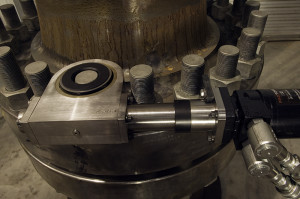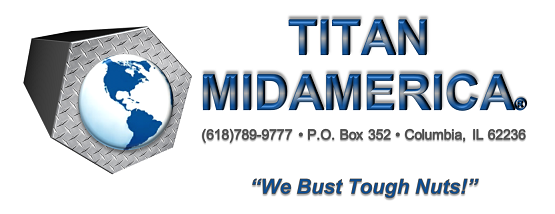Five Questions to Help You Figure It Out
You cannot go anywhere lately without hearing the term ROI. It is no surprise “Return on Investment” has caught fire. When the economy is tough, everyone wants to get the most value from their purchases.
For many, tools are costly. Getting the most from them is important. By understanding the financial and abstract benefits of each tool, you can determine if you are getting the most from your investment.
To calculate ROI, you must divide the benefits of your tool by its cost. This sounds easy, right? If you buy a tool for $5,000 and it helps you earn $25,000, you’ve made a return on your investment of $20,000? Not necessarily.
Many factors need to be calculated to understand if you are getting good tool ROI. If you earn $25,000 for the above job, did you pay your employees? Did you factor in travel expenses? How many other tools were involved in the job? You may end up with a profit of $5,000 after all of these considerations. What is the ROI on the tool now?
ROI can be tricky. Even if you show a profit after factoring in normal job expenses, there may still be other considerations? The following five questions will help you get to the heart of tool ROI to determine if that tool is indeed paying you back.
Five Questions
1. Did the tool break? If you have a tool that breaks and needs repair, are you adding to the cost of the repairs and the financial loss of productivity to the tool’s initial cost? If not, you are missing true costs involved in owning the tool and do not know if it provides a good return on your investment.
A tool with a industry leading warranty, like the warranties provided on FASTORQ tools, help to increase your tool ROI by removing the need to costs associated with unwarrantied repairs.
2. Did I have to buy multiples of the same tool? When time is money, did you purchase multiples of the same tool to have on standby to bring into service when your original breaks? If you did, you need to include that in the cost portion of your calculations. Even if you didn’t use the tool, it is still a cost. Buying backup tools because you cannot trust the tool you purchased is a sure indicator that you are not getting your best return on your investment.
 Also, if you buy multiple tools, such as several torque wrenches, to get the job done faster, is it the best investment you could make? Multiply the cost of three torque wrenches and compare it to one faster, better built torque wrench and the ROI may surprise you. Instead of purchasing three torque wrenches for three people to use to get the job done fast, you may only need one torque wrench, like the SpinTORQ, The SpinTORQ 360-degree continuously rotating torque wrench doesn’t need three people to operate it, yet it gets the job done three times faster than standard ratcheting torque wrenches. Ultimately, the return on investment for a SpinTORQ far surpasses multiple torque wrenches.
Also, if you buy multiple tools, such as several torque wrenches, to get the job done faster, is it the best investment you could make? Multiply the cost of three torque wrenches and compare it to one faster, better built torque wrench and the ROI may surprise you. Instead of purchasing three torque wrenches for three people to use to get the job done fast, you may only need one torque wrench, like the SpinTORQ, The SpinTORQ 360-degree continuously rotating torque wrench doesn’t need three people to operate it, yet it gets the job done three times faster than standard ratcheting torque wrenches. Ultimately, the return on investment for a SpinTORQ far surpasses multiple torque wrenches.
3. Did I settle on a tool rather than getting what I wanted? The old adage, “You’ve got to spend money to make money” could never be truer if you need a custom tool but choose to make due with a standard, non-customized one.
Ultimately, if your tool doesn’t meet your all of your needs without much fuss, it truly wasn’t worth it. Often, you will spend more time and money trying to make the tool do what you need rather than just purchasing the right tool from the start.
By finding a company, like FASTORQ, that can customize tools to your needs, you ultimately improve your tool ROI with improved performance and time. Those are measurable results that you can bank on.
4. Will I ever need this tool again? Sometimes, you only need a tool once. If you purchase an inexpensive tool that handles the job, and you only need it once, then you are probably looking at a reasonable return on your investment.
However, if you need a tool to work more than once, you need to take tool breakage and poor performance into consideration. Purchasing a strong and innovative tool may cost more upfront but it will pay you back exponentially by being a dependable piece of equipment you can use over and over again for years.
![Roughneck1[2] copy](/wp-content/uploads/Roughneck12-copy-300x200.jpg) 5. Do I regret my tool purchase? There are purchases you know were good and worth the expense. Others, you are not so sure about. Maybe the tool doesn’t perform like you had hoped, or its design does not consider the operator.
5. Do I regret my tool purchase? There are purchases you know were good and worth the expense. Others, you are not so sure about. Maybe the tool doesn’t perform like you had hoped, or its design does not consider the operator.
Regret is a powerful thing. If you are constantly regretting your tool purchases and think you could have found a better tool, the emotional part of your ROI is very low even if the financial part is high.
By buying the tool you want rather than settling, you won’t feel the pangs of regret later on. Your emotional ROI will hopefully be in line with your financial one when you happily use the tool you invested in time and time again.
Tool ROI has many facets, but if you need a tool for more than one use, it’s important to make sure you get one that you can count on not to break, is an innovative performer, fits your needs and will make you happy every time you need to use it. By adding these considerations into your next tool purchase, you can ensure you are getting the most return on your tool investment.
FASTORQ is a pioneer of the hydraulic tool industry that designs, manufactures and sells innovative and tough hydraulic, mechanical and pneumatic tools. They also specialize in customized bolting solutions for any job. When you are ready to get the best return on your tool investment, look to FASTORQ.
ShareSEP
2013

![ROI-Graphic[2] copy](/wp-content/uploads/ROI-Graphic2-copy-300x300.jpg)
![Value-Graphic[3] copy](/wp-content/uploads/Value-Graphic3-copy-300x247.jpg)